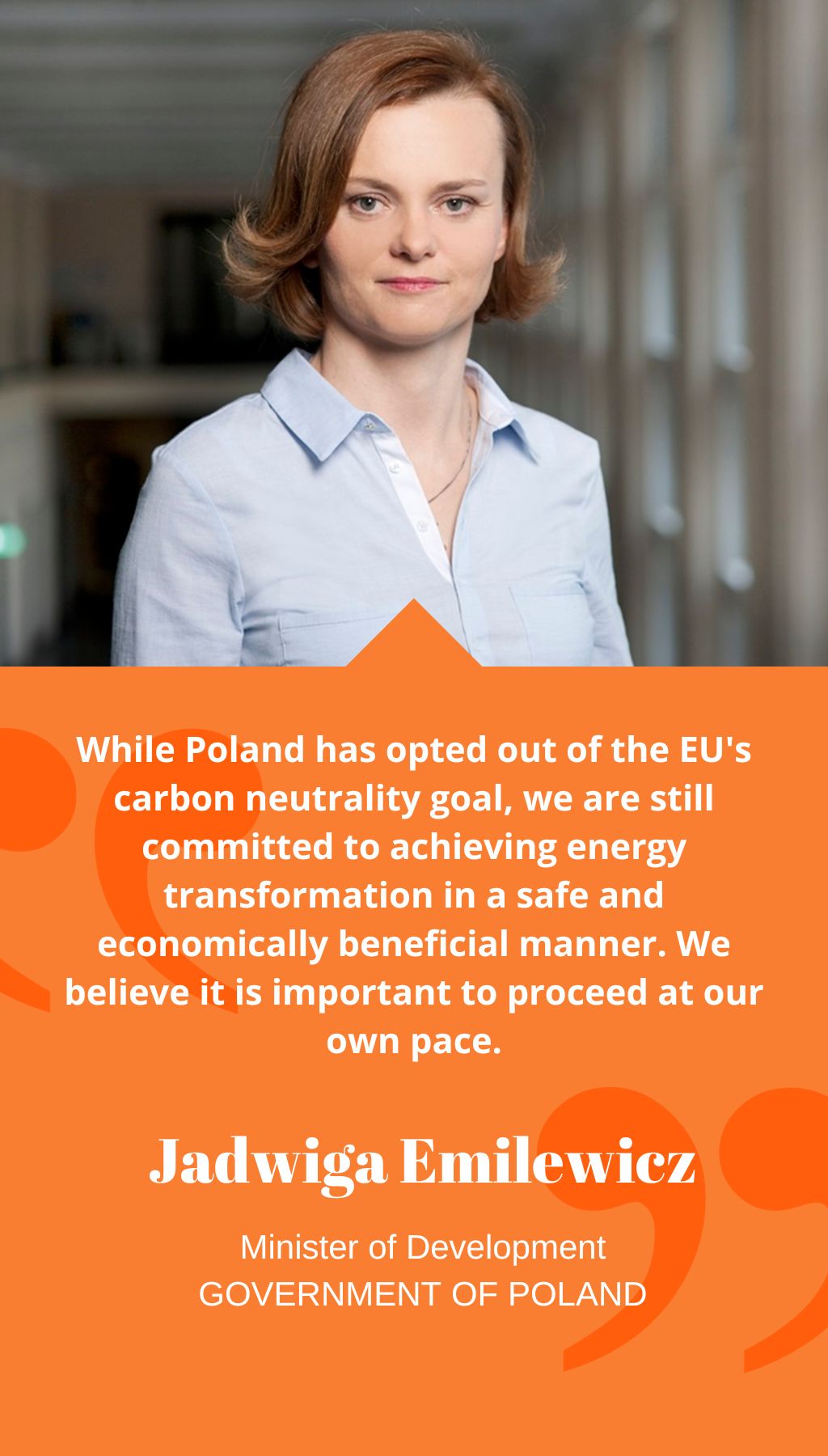
- Poland | 10 June 2019

Ms. Emilewicz, as the newly appointed Minister of Development, could you share with us the key ambitions you are pursuing during your mandate?
Absolutely. One of the key focuses of the Ministry of Development is the integration of two powerful divisions – tourism and construction. The tourism sector currently contributes about 6% to Poland’s GDP, while the housing sector accounts for around 8%. We are committed to working on regulatory amendments to create a more entrepreneur-friendly environment in these sectors.
In addition, we are also determined to continue our efforts in the energy sector. Specifically, we are keen on developing a prosumer energy market in Poland, where consumers can also be producers of energy. As the head of the inter-ministerial team for facilitating the development of prosumer energy, we have already prepared an amendment to the Renewable Energy Sources (RES) legal act and are committed to further working on it.
Poland holds a significant stake in the European Union’s path towards carbon neutrality. However, the country has recently opted out of this goal. How much progress can Poland realistically make by 2050?
While Poland has opted out of the EU’s carbon neutrality goal, we are still committed to achieving energy transformation in a safe and economically beneficial manner. We believe it is important to proceed at our own pace, taking into consideration the technological advancements and economic feasibility over the next 10 to 20 years. We acknowledge that entrepreneurs need regulatory incentives and financial support to effectively transform the current consumption habits and production chains. Therefore, our focus is not on whether we need energy transformation, but on how we can carry it out sustainably. In fact, energy transformation is already underway, as evidenced by the significant increase in home installations for solar energy in Poland in 2019, totaling 800 MW.
Solar energy is booming in Poland, but the onshore wind sector is limited by the 10H rule. Can we expect this rule to be amended in 2020? If so, in what way?
Absolutely. Our goal is to increase the power generated from wind energy, both on land and at sea, over the next 30 years. We are optimistic about the potential for lowering the costs of low-emission technologies, including wind and solar energy, as technology continues to advance. The installation costs for these technologies have already become more affordable.














